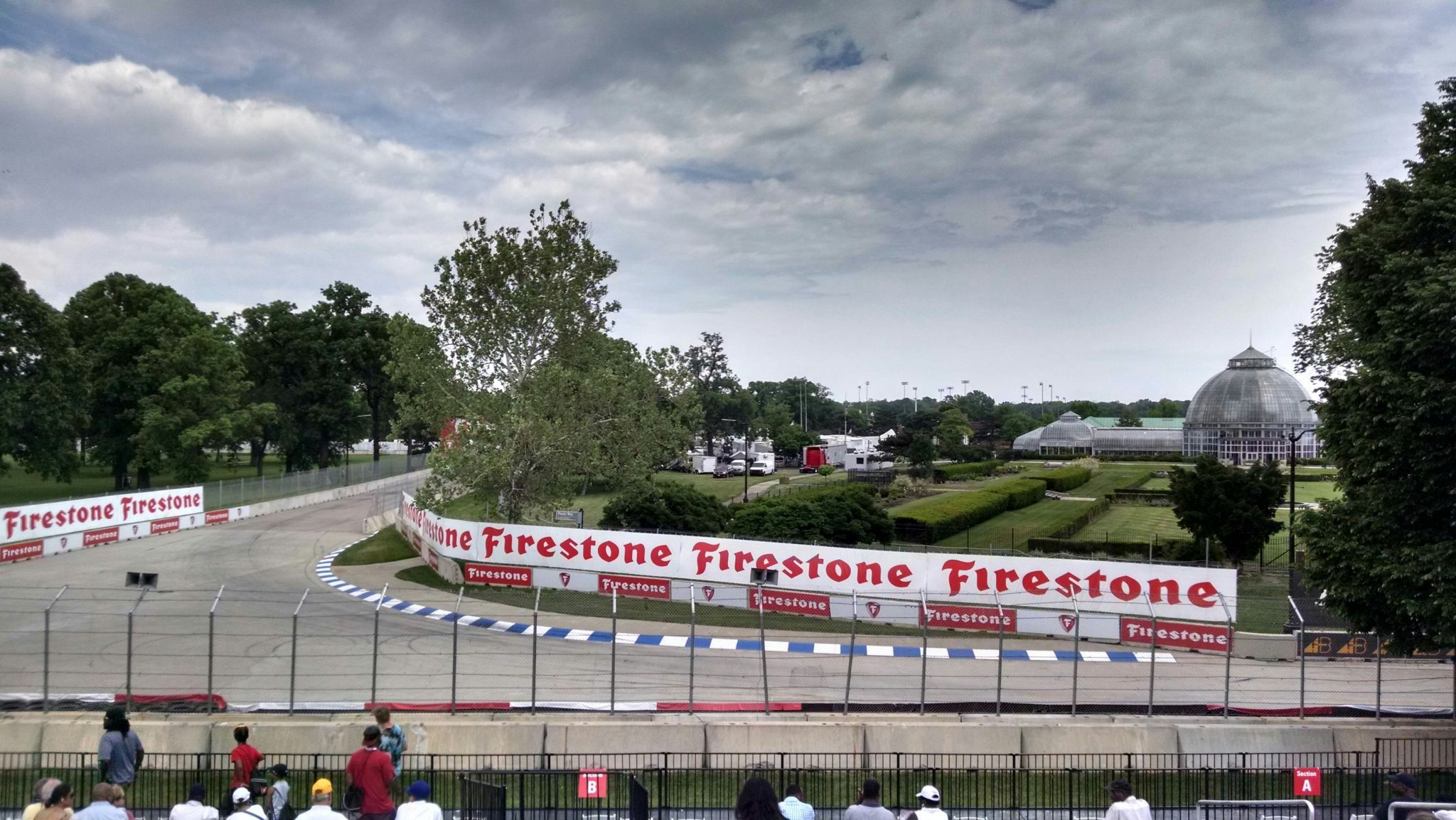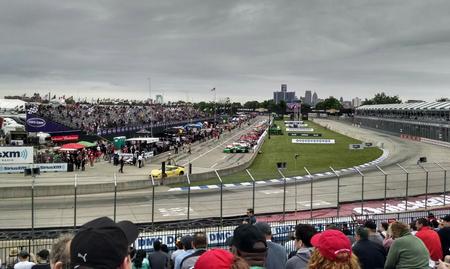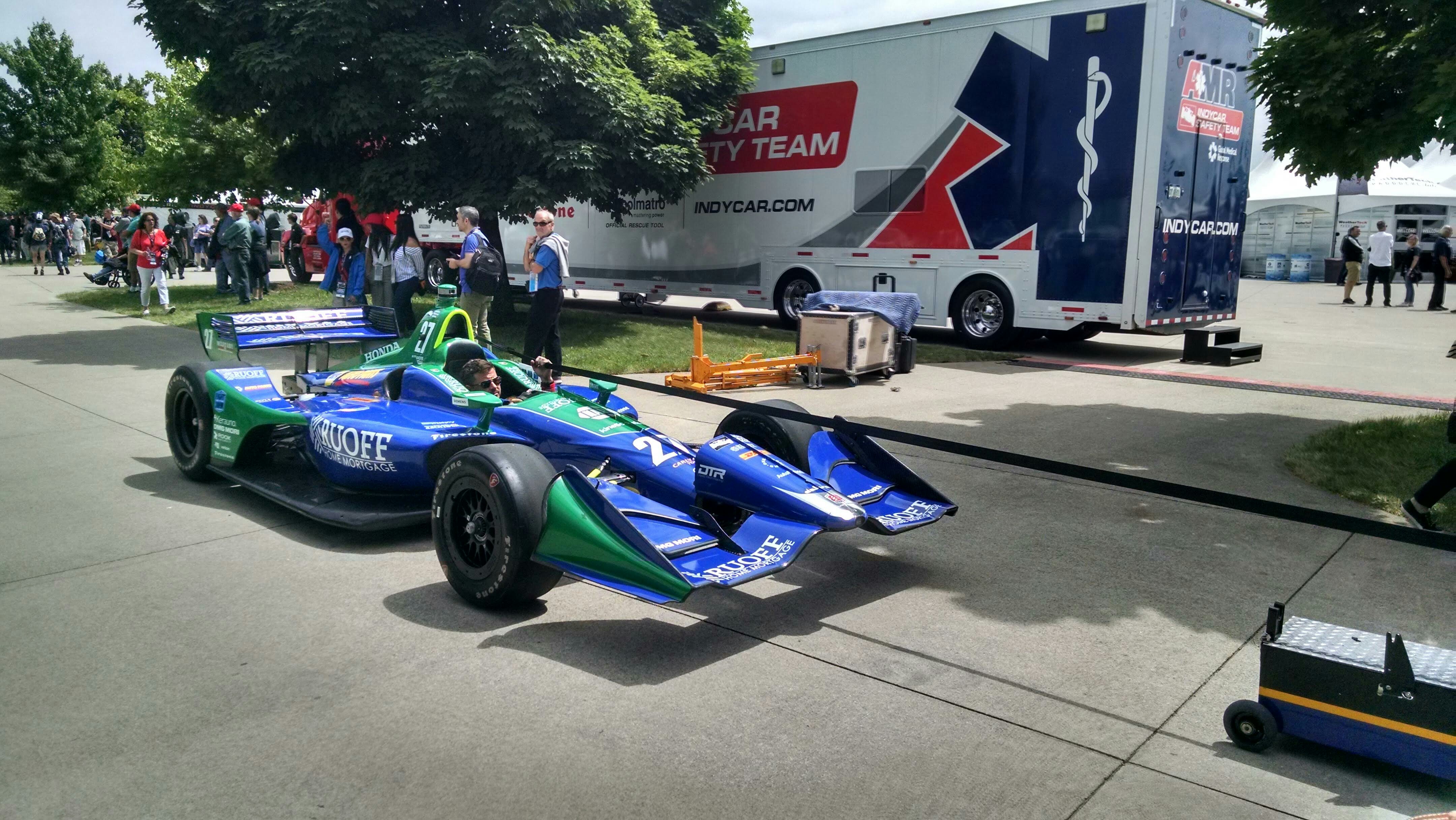Drivers Start Your Engine: Detroit Grand Prix Confirmed On Belle Isle
After months of contentious public meetings, officials have agreed to a new contract to keep the Grand Prix on the island through 2021.


The Detroit Grand Prix will return to Belle Isle through the year 2021, with an option to extend the contract for two years after that. The deal will see the race increase its annual financial investment by more than $200,000, and promises to further reduce the number of days the race impacts the island.
The new contract between race organizers and the Michigan Department of Natural Resources was officially announced Friday morning. The agreement follows months of contentious public meetings to discuss the subject, where race volunteers and protesters took turns voicing opinion on the matter.
Volunteers voiced their support for the event, including what they describe as the positive impact of the Grand Prix, on both the island and the greater community. In contrast, opponents criticized the idea of closing the west end of the park in order to hold the race. The protesters belong to a group known as Belle Isle Concern.
“Our group really believes that the Grand Prix does not belong on Belle Isle,” says group coordinator Sandra Novacek. “As we’ve always said we are not against the Grand Prix, but not on Belle Isle. It’s a public park, it’s not a race track.”
The Detroit Grand Prix has been held on Belle Isle since 1992. Race officials say they looked into holding the race elsewhere in the city, but no other location makes since.
At 2.3 miles in length, the Raceway at Belle Isle is the longest temporary circuit in North America. Event preparation requires that more than 4.5 miles of barriers be set up, which is over a half mile more than any other track on the continent.
Protesters call the barriers an eyesore, but Grand Prix President Michael Montri says organizers are very conscious about their impact. He says they’ve reduced their set the event’s annual time on the island by 30 days since 2015.
“And we’ll take anything into advisement that comes up,” says Montri. “We did do double shifts this year (during event setup) so we ran later, but we’ll consider anything that makes financial, logistical, and sense for the park.”
The new contract agrees to further reduce the race’s time on the island to about 60 days each year. That would make the Grand Prix on Belle Isle on of the most efficient setups per-mile of barrier in North America.
Opponents of the race on Belle Isle also call into question the Grand Prix’s ability to be stewards on the island. One point of contention is the Scott Memorial Fountain, which this year will receive $400,000 worth of improvements from race funding.

The podium celebration for the Grand Prix was relocated this year, placing it next to the historic landmark. It gave birth to a new celebration, where the winning drivers jump into the fountain. One driver even climbed onto one of the decorative lion heads.
“First of all I think it’s good to point out that those drivers have very soft shoes on,” says Montri, “and that fountain was originally designed for people to wade in. Certainly it’s not part of DNR protocol to allow that these days, and they sent us a nice letter saying that, ‘hey, this is not allowed’ and we’ll try to adhere to that going forward.”
Montri does point out that race organizers don’t technically have control over the actions of the drivers. The fountain is operated year-round by a Grand Prix volunteer.
There’s also a financial element to consider. The Michigan Department of Natural Resources has an annual budget for Belle Isle of $3.5 million dollars. The Grand Prix contributes about one-third of that funding, but only a portion comes from race organizers.
The real money maker is the Grand Prixmiere gala — an annual event for philanthropy. Over the last five years, it has raised an average of $800,000. It raised more than $1 million this year.
While those who oppose holding the race on Belle Isle recognize the financial impact of the gala, Sandra Novacek says that it should be handled differently.
“That’s what we’ve been saying for a long time really,” says Novacek, “is that if the Penske organization and the Grand Prix really had Belle Isle at heart, they could just hold a fundraiser without having to have a Grand Prix.”
But Michigan DNR Parks and Recreation division chief Ron Olson isn’t sure about that.
“A lot of the time you need events and things to tie to and bring in the entities,” he says. “I’m not saying it’s not possible but it’s something that right now is created out of the Grand Prix. So I don’t know.”
Olson says the DNR has a list of around $250 million worth of enhancements it wants to make on Belle Isle. Without funding from the Grand Prix, the majority of which goes towards those improvements, it would take the DNR hundreds of years to complete that list.

